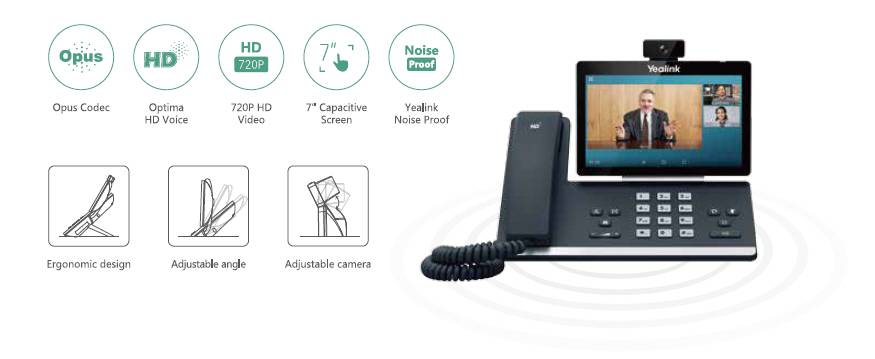Unified communications (UC) has become a cornerstone for businesses seeking to enhance productivity, collaboration, and overall efficiency. Among the various technologies that support UC, Voice over Internet Protocol (VoIP) phone systems stand out as a versatile and cost-effective solution. This article will delve into "The Essential Elements of Effective Unified Communications Using VoIP," exploring how these elements work together to create seamless communication experiences.

Introduction
In today's fast-paced business environment, effective communication is crucial for success. Traditional communication methods are often cumbersome, leading to inefficiencies and missed opportunities. VoIP phone systems offer a modern solution that integrates various forms of communication—voice calls, video conferencing, messaging, and more—into one unified platform. This article will provide insights into how organizations can leverage VoIP phone systems to enhance their unified communications strategy.
What is a VoIP Phone System?
A VoIP phone system uses the internet to transmit voice calls rather than traditional phone lines. This technology converts analog audio signals into digital data packets that can be transmitted over the internet. With VoIP, you can make calls from anywhere with an internet connection, making it a flexible option for businesses with remote or mobile workforces.
How Do VoIP Phone Systems Work?
VoIP works by digitizing your voice and sending it over the internet through a series of protocols designed for efficient data transfer:
Signal Conversion: Your voice is converted into digital signals. Packetization: The digital signals are broken down into small data packets. Transmission: These packets are sent over the internet to the recipient. Reassembly: The recipient's device receives the packets and reassembles them into an audio format.Benefits of Using VoIP Phone Systems
- Cost Savings: VoIP reduces costs associated with long-distance calls and eliminates the need for expensive hardware. Scalability: Businesses can easily add or remove lines as needed without significant investment. Flexibility: Employees can use their VoIP phones from anywhere with an internet connection.
The Essential Elements of Effective Unified Communications Using VoIP
The effectiveness of unified communications using VoIP hinges on several critical elements:
1. Integration with Other Communication Tools
For unified communications to be effective, your VoIP phone system should integrate seamlessly with other tools such as email, instant messaging, and video conferencing platforms. This allows users to switch between different modes of communication effortlessly.
1.1 Benefits of Integration
- Streamlined workflows Enhanced collaboration among teams Improved response times
2. High-Quality Audio and Video
Quality is paramount in any form of communication. A reliable VoIP phone system should provide clear audio and video capabilities to ensure smooth conversations without interruptions.

2.1 Factors Affecting Quality
Several factors can influence call quality:
- Internet bandwidth Network congestion Hardware quality
3. User-Friendly Interface
An intuitive user interface makes it easier for employees to navigate the system without extensive training. A simple design encourages adoption across all levels of the organization.
3.1 Key Features of User-Friendly Interfaces
- Easy access to contact lists Quick dial options Customizable settings
4. Mobility Solutions
In today’s work environment, mobility is essential. A robust VoIP phone system should offer mobile applications that allow employees to stay connected while on the go.
4.1 Advantages of Mobility in UC
- Increased productivity Flexibility in work arrangements Better work-life balance
5. Security Features
As businesses increasingly rely on digital communications, security becomes a top priority. Effective unified communications require robust security measures such as encryption and secure access protocols.
5.1 Common Security Threats in UC
- Eavesdropping on calls Data breaches Phishing attacks
6. Analytics and Reporting Tools
Data-driven decision-making is crucial in any organization’s strategy. Integrated analytics tools within your VoIP system provide insights into usage patterns and performance metrics.
6.1 Benefits of Analytics in UC
- Identify areas for improvement Optimize resource allocation Enhance customer service
7. Support and Maintenance Services
Reliable support ensures that any issues with your VoIP system are addressed promptly, minimizing downtime and maintaining http://reidwsyf342.tearosediner.net/how-to-leverage-video-conferencing-features-in-your-voip-system productivity levels.
7.1 Types of Support Services Offered by Providers
- 24/7 technical support On-site assistance Regular software updates
Choosing the Right VoIP Phone System for Your Business
When selecting a VoIP phone system for effective unified communications, consider these key factors:
8. Assess Your Business Needs
Evaluate your current communication challenges and future growth plans before making a choice.
FAQs About Assessing Business Needs
Q: How do I determine what features my business needs? A: Conduct surveys among employees about their communication preferences and challenges they've faced with current systems.
Q: Should I prioritize cost over features? A: It’s essential to find a good balance between cost-effectiveness and necessary features that enhance productivity.
9. Research Different Providers
Not all providers are created equal; research potential vendors thoroughly before making a decision.
9.1 What to Look For?
Here are some key aspects to evaluate when researching providers:
| Feature | Importance | |------------------|--------------------------------| | Customer Reviews | Insight into reliability | | Service Level Agreements (SLAs) | Guarantees uptime | | Feature Set | Alignment with business needs |
10. Evaluate Scalability Options
Your chosen system should grow alongside your business without requiring complete overhauls or substantial investments each time you expand.
10.1 Why Scalability Matters?
Businesses often experience fluctuations; having scalable solutions helps adapt quickly without incurring high costs or excessive downtime during transitions.
The Role of Training in Implementing Unified Communications
Even the best technology won’t be effective if users don’t know how to utilize it properly.
11.Training Programs for Employees
Investing in comprehensive training programs ensures everyone understands how to use the new system effectively.
11.A Training Checklist
Ensure your training includes:

- Overview of features Hands-on practice sessions Ongoing support resources
Best Practices for Unified Communications Using VoIP
To maximize efficiency when utilizing unified communications through your new VoIP phone systems, consider these best practices:
12.Set Clear Communication Guidelines
Establishing clear guidelines helps manage expectations around responses times and preferred communication methods among team members effectively.
12.A Sample Guideline Outline
- Preferred channels per type of message (urgent vs non urgent) Response time frame expectations Tips for effective virtual meetings
13.Regularly Update Software
Keeping software up-to-date not only enhances security but also provides access to new features that improve functionality significantly over time .
Integrating Cloud Services with Your VoIP System
Cloud services have revolutionized how we store data—and they can also enhance your unified communications strategy when integrated properly!
14.Benefits Of Cloud Integration
Integrating cloud services offers several advantages including :
- Increased storage capacity Flexibility in accessing information from anywhere Improved collaboration via shared documents
Enhancing Customer Experience Through Unified Communications
Effective UC strategies using VoiP systems enable businesses provide superior customer experiences leading increased satisfaction levels amongst clientele .
15.Personalizing Communication
Utilizing customer data gathered through previous interactions allows organizations tailor conversations specifically towards individual preferences thereby enhancing overall engagement rates .
Conclusion
Unified communications powered by robust solutions like those offered through modern day VOiP Phone Systems present numerous opportunities improve overall efficiency whilst streamlining processes across organizations . By understanding “The Essential Elements Of Effective Unified Communications Using VOiP” , companies position themselves optimize internal operations ultimately enhancing customer satisfaction levels driving growth !
FAQs
Here are some frequently asked questions regarding unified communications using VoIP:
Q: What is the difference between traditional telephony and VoIP? A: Traditional telephony relies on circuit-switched networks while Voice over Internet Protocol uses packet-switched networks along internet connections reducing costs significantly!
Q: Can I keep my existing number when switching to a new provider? A: Yes! Most providers offer porting services allowing customers retain their existing numbers during transitions smoothly .
Q: Is there any downtime expected during installation? A: Generally speaking , installation should occur during off-hours minimizing disruptions however this varies based upon specific circumstances involved .
Q : What types devices compatible with VOiP systems ? A : Most commonly used devices include desktop computers , laptops , smartphones , tablets among others as long they possess required applications installed !
By implementing these strategies informed decisions lead towards sustainable success resulting seamless experiences both internally externally alike !